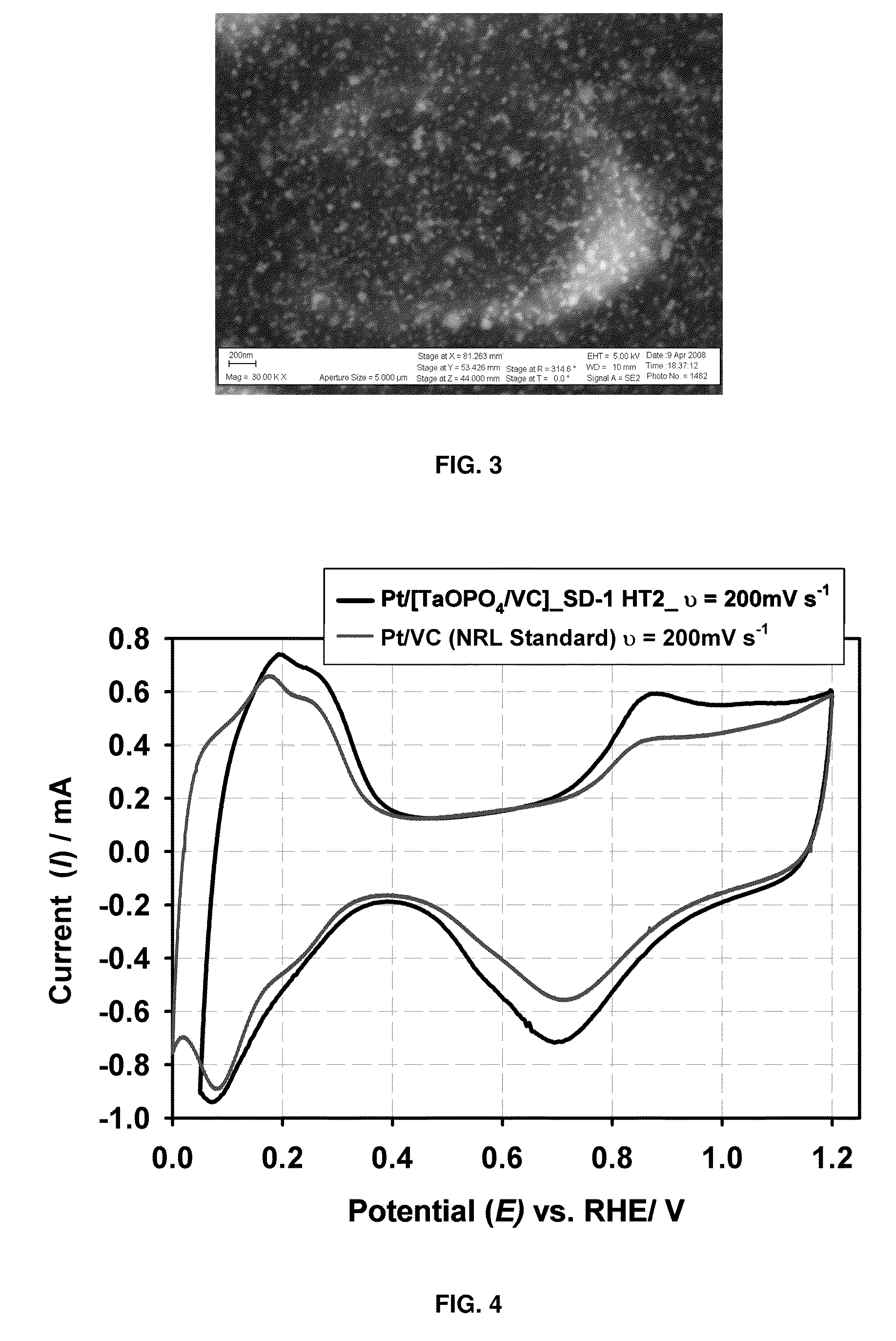Nanocomposite catalyst materials comprising conductive support (carbon), transition metal compound, and metal nanoparticles
- Summary
- Abstract
- Description
- Claims
- Application Information
AI Technical Summary
Benefits of technology
Problems solved by technology
Method used
Image
Examples
Embodiment Construction
[0022]One embodiment of the present invention provides a method to increase the contact between Pt nanoparticles catalysts with an insulating oxy-phosphate phases and the carbon support through the use of high surface area nanoparticles. Earlier catalysts were made by a physical mixture of Pt-impregnated metal oxy-phosphate with Vulcan carbon (VC), as shown in FIG. 1(a). The physical mixture of the catalyst with the conductive support was used to eliminate any effect of the carbon support on the catalytic metal-support interactions between the Pt and metal phosphate, and thus prove the catalytic effect. (U.S. Pat. No. 7,255,955 to Lyons et al. issued Aug. 14, 2007; Bouwman et al., “Platinum iron phosphates for oxygen reduction in PEMFCs,”J. Electrochem. Soc., 151, A1989-A1998 (2004); Lyons et al., “Oxygen reduction on oxide- and phosphate supported noble metal catalysts,”Catalysts for Oxygen Electro reduction—Recent Developments and New Directions, 169-193 ESBN: 978-81-7895-313-7, T...
PUM
| Property | Measurement | Unit |
|---|---|---|
| Temperature | aaaaa | aaaaa |
| Fraction | aaaaa | aaaaa |
| Fraction | aaaaa | aaaaa |
Abstract
Description
Claims
Application Information
 Login to View More
Login to View More - R&D
- Intellectual Property
- Life Sciences
- Materials
- Tech Scout
- Unparalleled Data Quality
- Higher Quality Content
- 60% Fewer Hallucinations
Browse by: Latest US Patents, China's latest patents, Technical Efficacy Thesaurus, Application Domain, Technology Topic, Popular Technical Reports.
© 2025 PatSnap. All rights reserved.Legal|Privacy policy|Modern Slavery Act Transparency Statement|Sitemap|About US| Contact US: help@patsnap.com



